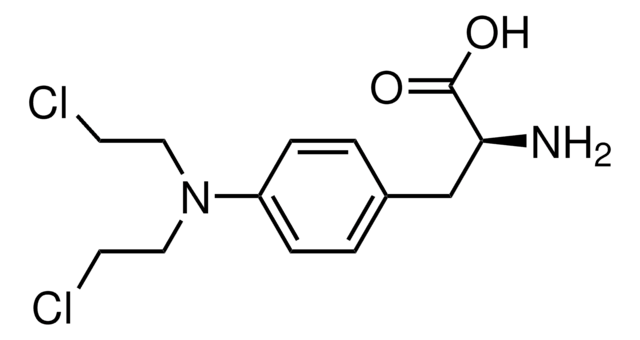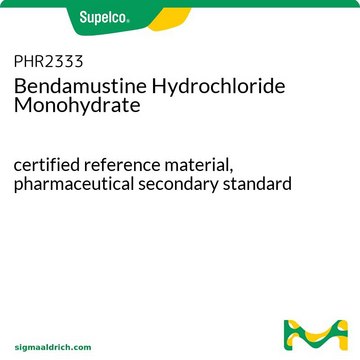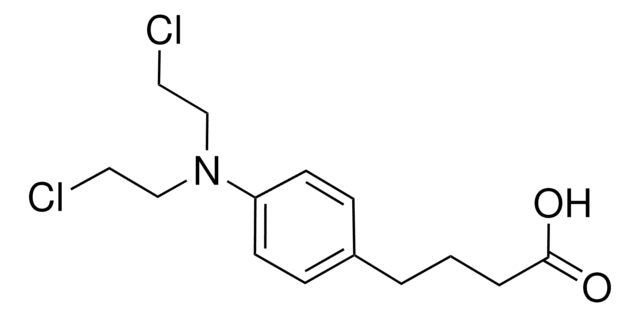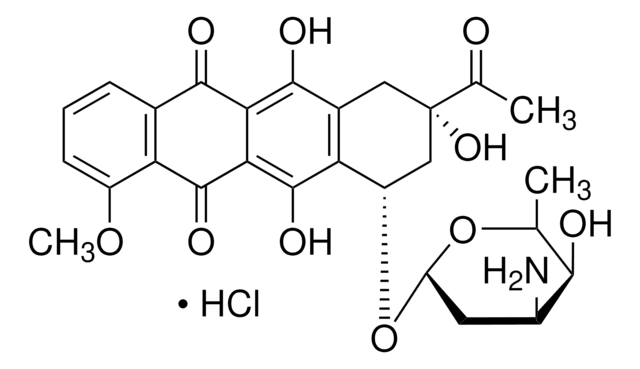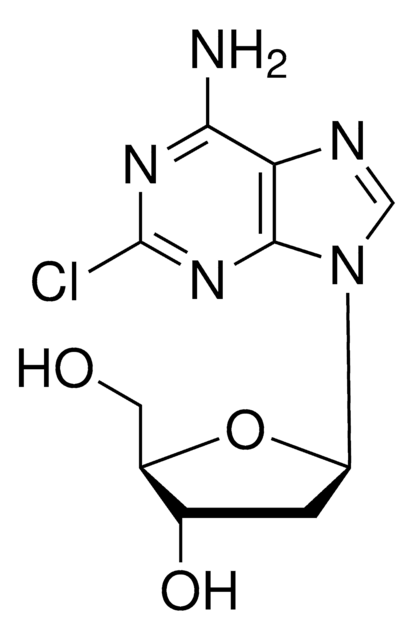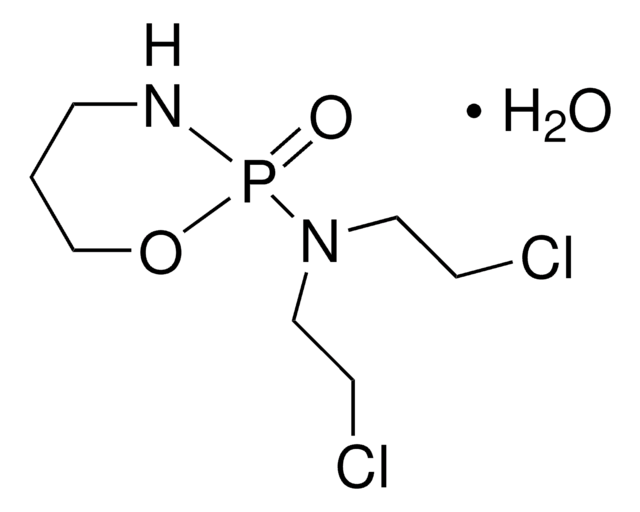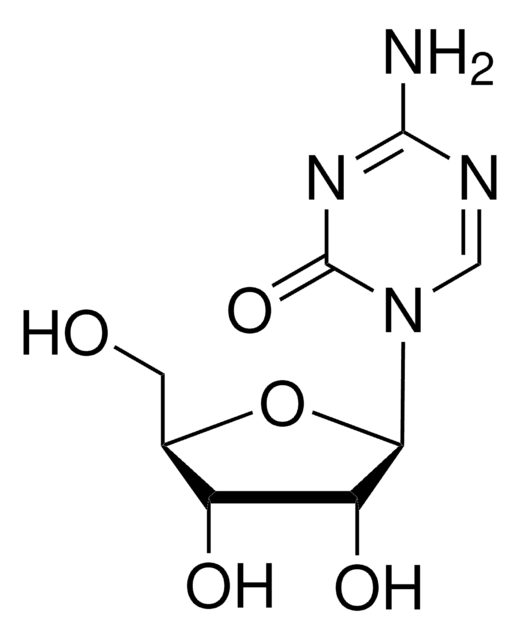B5437
Bendamustine hydrochloride hydrate
≥98% (HPLC)
Sinónimos:
1H-Benzimidazole-2-butanoic acid, 5-[bis(2-chloroethyl)amino]-1-methyl monohydrochloride, Treanda
About This Item
Productos recomendados
Quality Level
assay
≥98% (HPLC)
form
powder
storage condition
desiccated
color
off-white
solubility
H2O: >30 mg/mL
originator
Teva
storage temp.
room temp
SMILES string
O.Cl.Cn1c(CCCC(O)=O)nc2cc(ccc12)N(CCCl)CCCl
InChI
1S/C16H21Cl2N3O2.ClH.H2O/c1-20-14-6-5-12(21(9-7-17)10-8-18)11-13(14)19-15(20)3-2-4-16(22)23;;/h5-6,11H,2-4,7-10H2,1H3,(H,22,23);1H;1H2
InChI key
TWBJYCLUHINEDN-UHFFFAOYSA-N
General description
Application
- a chemotherapy agent for chronic lymphocytic leukemia (CLL) samples to monitor spliced and unspliced gene expression
- an inhibitor to E3 ubiquitin-protein ligase RNF3 (HOIP) in matrix-assisted laser desorption ionization time-of-flight mass spectrometry (MALDI-TOF) assay
- a cytotoxic chemotherapeutic drug in high-throughput screening to test interaction with BAY87-2243
Biochem/physiol Actions
Features and Benefits
signalword
Danger
hcodes
Hazard Classifications
Acute Tox. 3 Oral - Carc. 2 - Muta. 2 - Repr. 2
Storage Class
6.1C - Combustible acute toxic Cat.3 / toxic compounds or compounds which causing chronic effects
wgk_germany
WGK 3
flash_point_f
Not applicable
flash_point_c
Not applicable
ppe
dust mask type N95 (US), Eyeshields, Faceshields, Gloves
Certificados de análisis (COA)
Busque Certificados de análisis (COA) introduciendo el número de lote del producto. Los números de lote se encuentran en la etiqueta del producto después de las palabras «Lot» o «Batch»
¿Ya tiene este producto?
Encuentre la documentación para los productos que ha comprado recientemente en la Biblioteca de documentos.
Los clientes también vieron
Contenido relacionado
n proliferating cells, the cell cycle consists of four phases. Gap 1 (G1) is the interval between mitosis and DNA replication that is characterized by cell growth. Replication of DNA occurs during the synthesis (S) phase, which is followed by a second gap phase (G2) during which growth and preparation for cell division occurs. Together, these three stages comprise the interphase phase of the cell cycle. Interphase is followed by the mitotic (M) phase.
Apoptosis, or programmed cell death (PCD), is a selective process for the removal of unnecessary, infected or transformed cells in various biological systems. As it plays a role in the homeostasis of multicellular organisms, apoptosis is tightly regulated through two principal pathways by a number of regulatory and effector molecules.
Nuestro equipo de científicos tiene experiencia en todas las áreas de investigación: Ciencias de la vida, Ciencia de los materiales, Síntesis química, Cromatografía, Analítica y muchas otras.
Póngase en contacto con el Servicio técnico